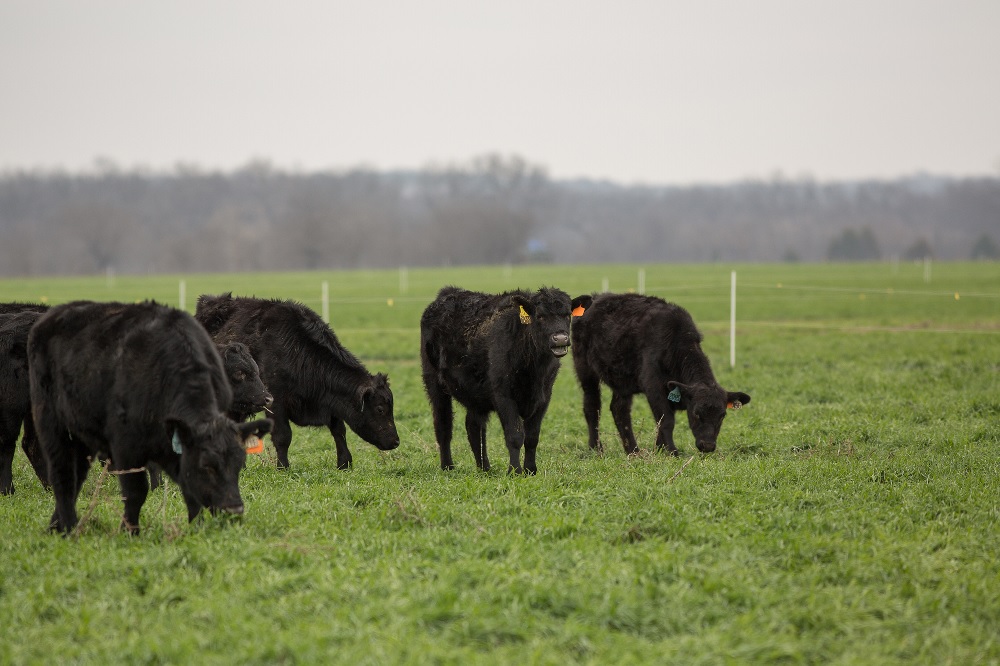
Agricultural News
Better Grazing Management Could Lead to Better Profits - Dr. Derrell Peel Explains How
Mon, 01 Aug 2016 11:42:41 CDT
 Mondays, Dr. Derrell Peel, Oklahoma State University Extension Livestock Marketing Specialist, offers his economic analysis of the beef cattle industry. This analysis is a part of the weekly series known as the "Cow Calf Corner" published electronically by Dr. Peel and Dr. Glenn Selk. Today, Dr. Peel examines how to best manage grazing costs to maintain net profit margins for producers.
Mondays, Dr. Derrell Peel, Oklahoma State University Extension Livestock Marketing Specialist, offers his economic analysis of the beef cattle industry. This analysis is a part of the weekly series known as the "Cow Calf Corner" published electronically by Dr. Peel and Dr. Glenn Selk. Today, Dr. Peel examines how to best manage grazing costs to maintain net profit margins for producers.
"Cow-calf revenues have decreased dramatically in the past few months and are expected to remain lower for the next couple of years. Producers must focus more attention on cost management to help maintain net returns in this environment. A reasonable question to ask is: don't producers always attempt to minimize costs in order to maximize profits? The answer is generally yes but the fact is that there are ways to manage costs that require more effort and intensive management and may not be routinely employed or may not have been previously used by a producer.
"Information from Kansas State University indicates that total pasture plus non-pasture feed costs represent 45-50 percent of total annual cow costs. Non-pasture cost includes both harvested forages and supplemental feeds. Total feed cost is the single largest component of annual cow costs and arguably the best opportunity for cost management. The breakdown between pasture and non-pasture costs is particularly useful because it focuses on the forage, which is the primary production of cow-calf and stocker operations, and the management of that grazing resource compared to the use of harvested forages and supplemental feed to augment the quantity and quality of grazed forages. Often tradeoffs are possible in the efficient use of grazed forage compared to the use of more expensive harvested forages and purchased supplemental feeds. Of course, all of this takes place against the backdrop of herd nutritional management as an important component of herd health, reproductive efficiency and overall productivity. Both feed quantity and quality are critically important in herd nutritional management.
"In order to evaluate and make good decisions about feed management and the tradeoffs between grazing and non-pasture feed costs, it is critical to know the cost of grazed forage. Published pasture rental values in Oklahoma provide a means to understand the cost of grazed forage. A wide variety of pasture types are used in Oklahoma including native range as well as introduced warm season forages such as Bermuda or old world bluestem and cool-season grasses such as fescue and ryegrass. When differences in rental rates, stocking rates and grazing season length are accounted for, the cost of grazed forage is very consistent across forage types at about 1.5 cents per pound of grazed forage. Thus, grazed forage costs about $30/ton. For a cow eating 30 pounds of forage per day, this is $0.45/head/day. The grazing season reported for pasture rental is roughly 270 days for warm season grasses; less for cool-season forages. However, combinations of warm and cool season forages, and delayed grazing on stockpiled pastures can extend the grazing season by 30 - 60 days. Again, the key is increased management in the form of planning pasture use, deferment and fertility (for introduced grasses). Forage alternatives, such as grazing small grain (e.g. wheat) pasture, winter annuals (radishes, turnips, et.) and including more legumes in introduced pastures may significantly impact seasonal forage quantity and quality and should be evaluated to determine feasibility in specific situations.
"Understanding pasture value also highlights decisions about pasture management. In situations where invasive species, such as eastern red cedar, have a direct impact on available forage, the value of control, or alternatively, the cost of not controlling the loss of grazing to these pests becomes much clearer. When hay is used to replace grazing, the cost is always higher. A future article will look at hay costs in more detail."
WebReadyTM Powered by WireReady® NSI
Top Agricultural News
More Headlines...




